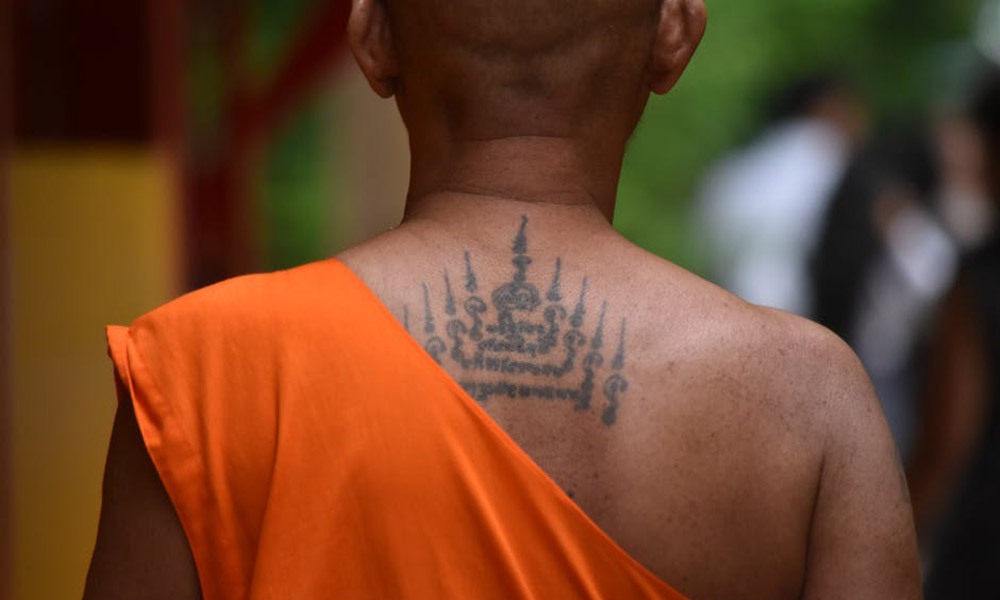A Complete History of Tattoos
Tattoos have become a massive part of our culture both in the United States and around the world. You might think that the artform or craze only started a century or two ago. However, that’s not the case.
Tattoos have been around in some way for over 5,000 years. If you want to learn a complete history of tattoos, read on.
Otzi – The Iceman
Archaeologists discovered the first tattoo or oldest dating tattoo in September of 1991. Otzi, a mummified human, gets his name from the place two German hikers found him. The Oztzal Alps of Europe near the Italian and Austrian border.
Researchers discovered a total of 61 tattoos on Otzi. The tattoos are from soot or ash from a fireplace. They’re divided into 19 groups in different areas of the body.
Otzi was about five-foot-three inches tall and somewhere between 30 and 45 years old.
Otzi’s tattoos are on his ankle points, knee, and spine. How he died is a mystery, but they think his death was a violent one.
There’s one extremely interesting thing. The markings on Otzi align with traditional Chinese acupuncture points. That can’t be a coincidence, can it?
But, Otzi was alive 2,000 years before the earliest evidence of acupuncture, and he was very far from China for the time period.
After Otzi – Egyptian Mummies
Until Otzi was found, evidence showed that the earliest tattoos came from about 4,000 years ago. There was a group of Egyptian mummies that are from the time the great pyramids were being made.
There’s some indirect evidence that may or may not conclude that tattoos or tattooing may even be older and more widespread than the Egyptian mummies.
The indirect or inconclusive evidence is that of engraved statuettes that can sometimes be put in the same context as needles and clay discs with ochre.
What Historical Cultures Practiced Tattooing?
 Historical and Ethnographic texts have shown that tattoos have been done by almost every known human culture, including Ancient Greeks who used tattoos in the fifth century to communicate with their spies.
Historical and Ethnographic texts have shown that tattoos have been done by almost every known human culture, including Ancient Greeks who used tattoos in the fifth century to communicate with their spies.
After that, the Romans used to mark their slaves and criminals with tattoos.
Your first criminal offense in Japan way back when meant you got a line tattooed across your forehead. A second offense meant you got an arch tattooed above the line.
If you were guilty of a third offense, you got another line, and it completed the symbol for “dog.”
Of course, we can’t talk about ancient tattoos without discussing the Mayans, Aztecs, and Incas. They would have big tattooing rituals.
Then there’s the Norse, Danes, and Saxons who would tattoo their family’s crest across their chest. And the Britons also had tattoo ceremonies.
Tahitians also like their tattoos, and the word tattoo comes from the Tahitian word “tatau,” which means strike or mark. And tattoo means tapped as most tattoos back then were tapped into the skin by bone or wood.
In the Arctics, they pulled carbon thread under the skin with a needle. They could make designs with this method, almost like needlepoint.
Tattoos in Europe
Of course, the history of tattoos in Europe starts with Otzi but, there was evidence found showing that people may have been experimenting with tattoos before the last ice age nearly 12,000 years ago.
In 1867, at Grotte di Fées in Châtelperron, France, researchers found flintstone tools and bowls with red and black pigments.
But, this doesn’t mean the tools and paints were used to tattoo humans. They could have been used to draw on the walls in the caves. So, Otzi is the first or earliest proof of tattoos on humans.
In the early 300s, A.D., Constantine, the roman Emporer at the time, banned facial tattoos.
He did so because criminals wore them; while so did his own soldiers and gladiators. Constantine would have none of that and put the ban in place.
Other Europeans, such as the Vikings, didn’t seem to care. You could find them in the 1100s A.D. covered with tattoos.
In the 1700s, a British naval Captain by the name of Cook brought back native Polynesians with tattoos. The soldiers liked the idea and proceeded to get tatted up.
Alfred Charles South, from London, created the first twin coil tattoo machine in 1899. It was so heavy it had to be suspended from the ceiling to work correctly.
Tattoos in America
The history of tattoos in America can be a bit complicated. The origins of the English word tattoo are from the 16th century.
But the earliest proof of tattoos in America comes from a picture or pictograph of a Seneca trader. The Seneca traders’ tattoos were a bird and snake, which represent freedom.
There is also the picture of The Four Indian Kings from that same era. The King of the Maquas, a Mohawk tribe, is in that picture after returning from a European voyage.
His chest and lower part of his face were covered in black lines that were tattooed.
The origins of the first tattoo machine in America started with Thomas Edison. He created an electric stencil maker.
In 1891, a man named Samuel F. O’Reilly used Edison’s design to create the first electric tattoo machine. O’Reilly patented the machine on December 8th of that year.
Both the design O’Reilly used, which is like a rotary machine, and the coil machine from Europe are still used today to some effect. Nowadays they’re cooler looking, lighter, and much easier to handle with a lot of accessories.
The History of Tattoos and Today’s World
Tattoos and tattoo machines have come a long way since Otzi. We still use the rotary and coil methods, but they’re a lot smaller, lighter, and easier to maneuver.
Modern-day tattoo artists have several different tools/accessories they can use for different tattoos, but they all stem from past centuries of the art of the tattoo.
If learning about the history of tattoos has given you the itch for one, contact us now for an appointment.
To learn more, contact us here.
